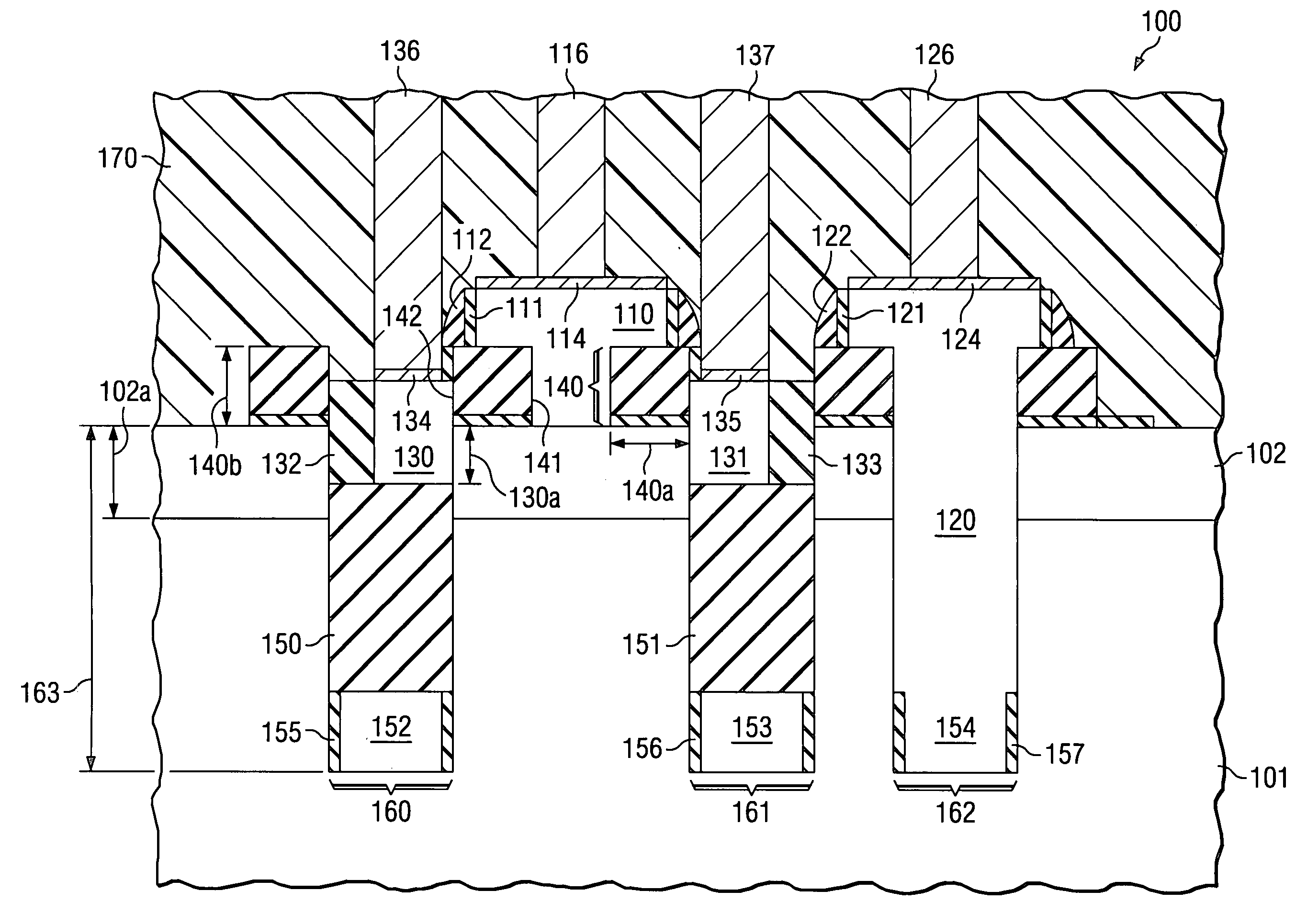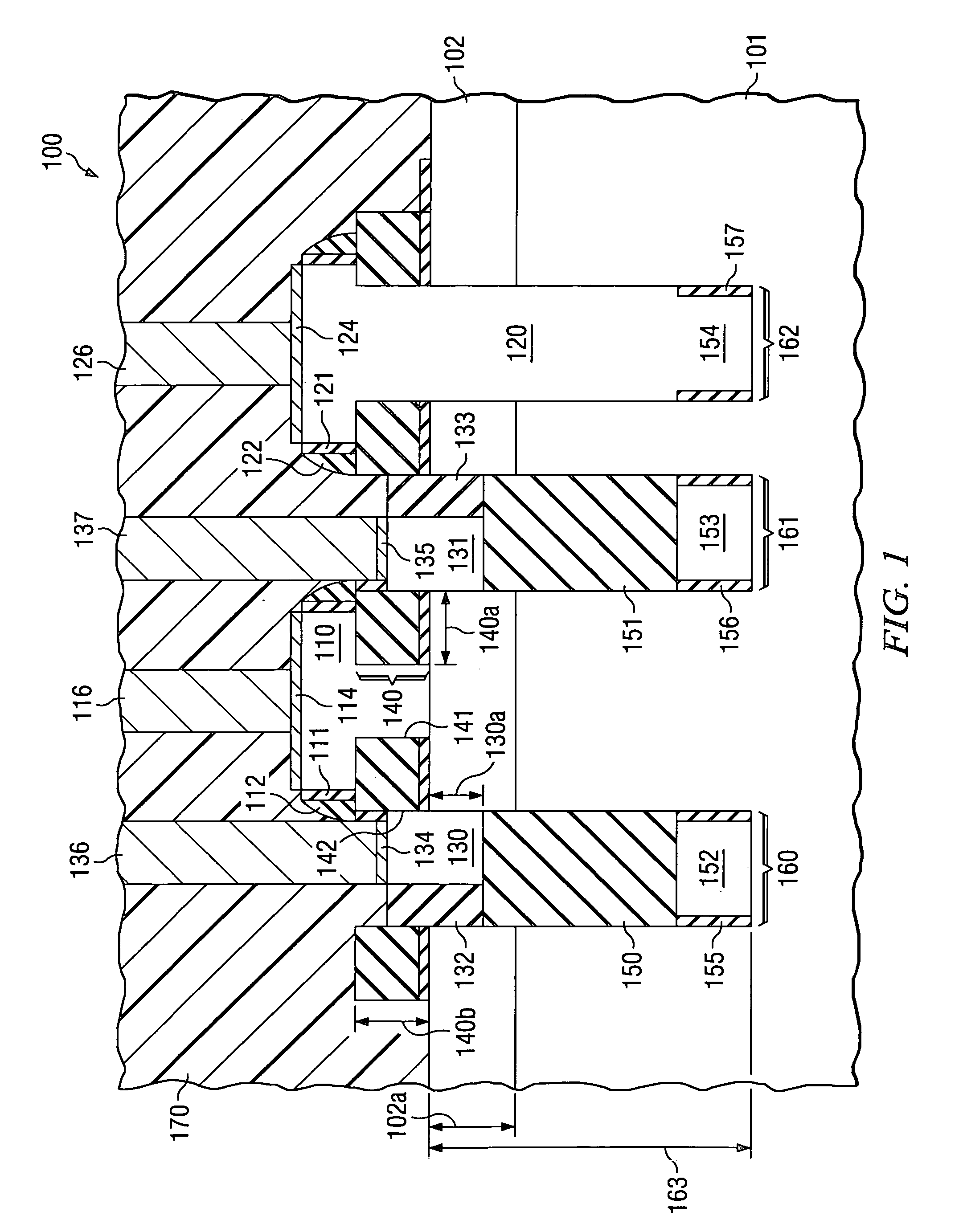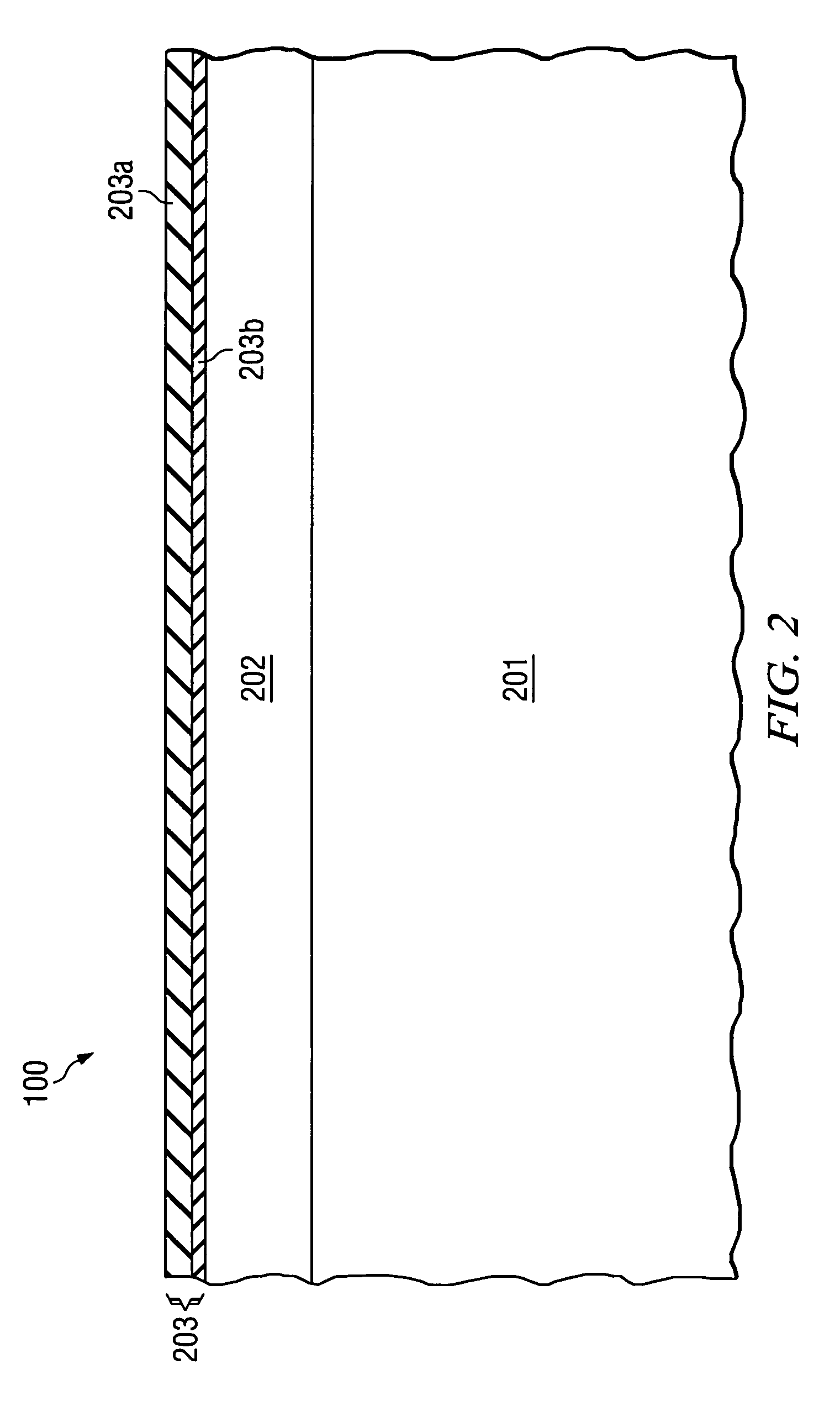Bipolar transistor having base over buried insulating and polycrystalline regions
a bipolar transistor and polycrystalline technology, applied in the field of electric systems and semiconductor devices, can solve the problems of lower collector resistance, achieve the effects of avoiding alignment tolerance inherent, better control of base resistance, and better control of gain and bandwidth
- Summary
- Abstract
- Description
- Claims
- Application Information
AI Technical Summary
Benefits of technology
Problems solved by technology
Method used
Image
Examples
Embodiment Construction
[0028]FIG. 1 illustrates a schematic cross section of a portion of a semiconductor substrate 101 depicting a heterojunction bipolar transistor (HBT) device, generally designated 100, according to an embodiment of the present invention. The semiconductor substrate is monocrystalline and has a first conductivity type. Preferably, the substrate is made of silicon and the conductivity is n-type; the considerations of this invention, however, also apply to p-type semiconductor substrate material, and to any other semiconductor material, including gallium arsenide, used in device production.
[0029]In the example of FIG. 1, the surface of substrate 101 is topped by a monocrystalline surface layer 102. This surface layer 102 is epitaxially grown and may have intrinsic conductivity or opposite conductivity type; it may be composed of the same semiconductor material as substrate 101 or it may be a different semiconductor. As examples, surface layer 102 may be p-type silicon on an n-type substr...
PUM
 Login to View More
Login to View More Abstract
Description
Claims
Application Information
 Login to View More
Login to View More - R&D
- Intellectual Property
- Life Sciences
- Materials
- Tech Scout
- Unparalleled Data Quality
- Higher Quality Content
- 60% Fewer Hallucinations
Browse by: Latest US Patents, China's latest patents, Technical Efficacy Thesaurus, Application Domain, Technology Topic, Popular Technical Reports.
© 2025 PatSnap. All rights reserved.Legal|Privacy policy|Modern Slavery Act Transparency Statement|Sitemap|About US| Contact US: help@patsnap.com



